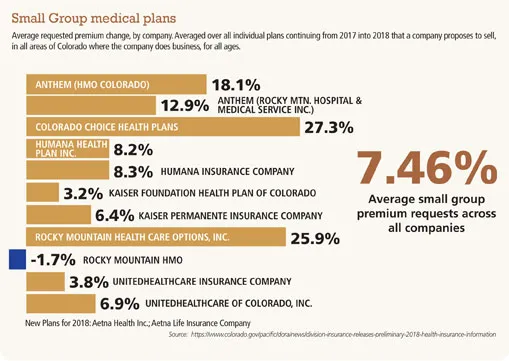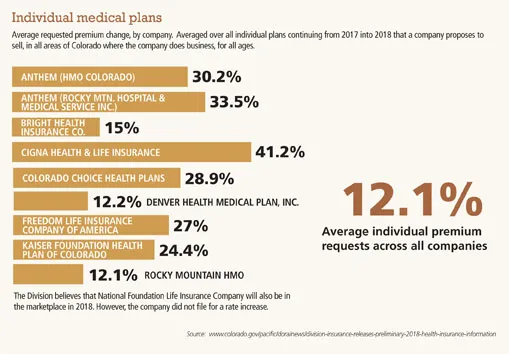Increases predicted for premiums: Small-business groups expected to fare better for 2018 plan year

 Uncertainty about the fate of the Patient Protection and Affordable Care Act in Washington, D.C., and higher medical and prescription costs are fueling some double-digit percentage premium increases in the individual plan market for the 2018 plan year. The small business group market is seeing an average of 7.46 percent increases.
Uncertainty about the fate of the Patient Protection and Affordable Care Act in Washington, D.C., and higher medical and prescription costs are fueling some double-digit percentage premium increases in the individual plan market for the 2018 plan year. The small business group market is seeing an average of 7.46 percent increases.
And while finalized rates aren’t out yet — the Colorado Division of Insurance won’t release those until September — insurance carriers in the state’s individual market have asked for between a 12.1 percent increase and a…
THIS ARTICLE IS FOR SUBSCRIBERS ONLY
Continue reading for less than $3 per week!
Get a month of award-winning local business news, trends and insights
Access award-winning content today!
